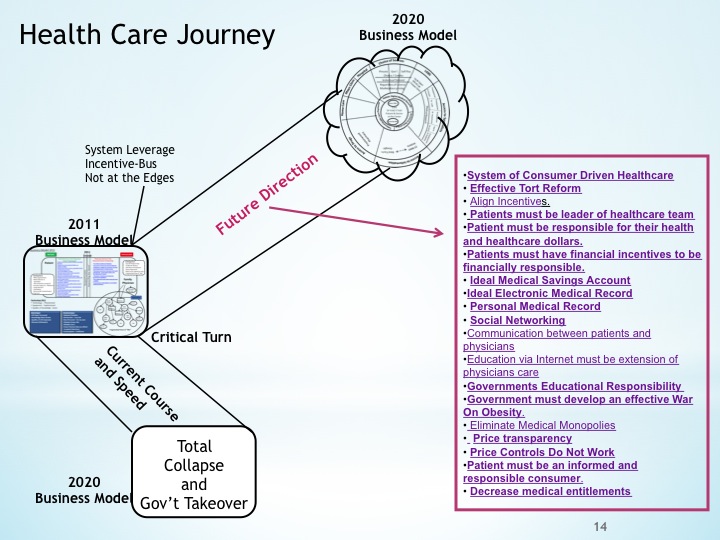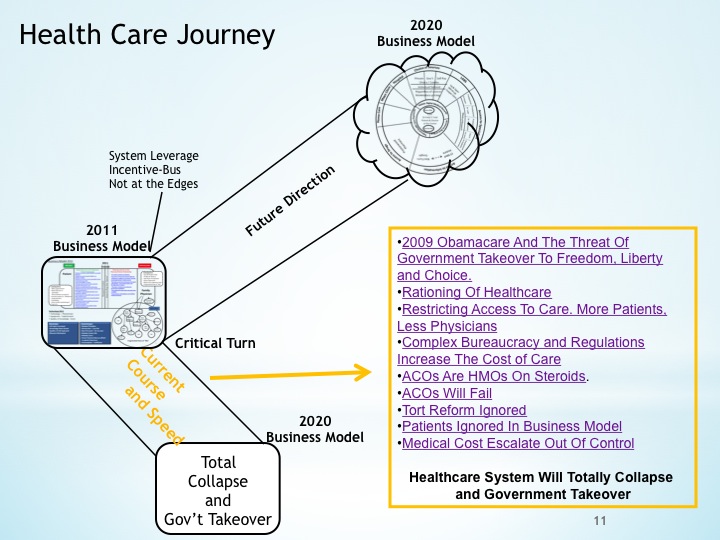Where I Am Coming From
Stanley
Feld M.D.,FACP,MACE
I realize that many people
read my blog by just glancing at it. It is difficult for a casual reader to
grasp my hypothesis.
The devil is always in the
details. The details expose defects and unintended consequences.
Yogi Berra once said, "You've got to be very careful if you don't know where you are going because you might not get there."
Many readers believe I am
very critical of President Obama’s plan to reform the healthcare system. This impression
is correct.
To my chagrin many of my
non-physician friends, who are President Obama lovers, hold it against me.
The basic goals of President
Obama’s healthcare reform plan are correct.
In my view his philosophy and
methods are wrong. I have pointed out the faults with his philosophy and
methods and why they cannot work.
President Obama wants
universal access to healthcare that is affordable and is delivered using best medical
practices.
I have the same goals.
I have outlined a consumer
driven healthcare system which emphasizes freedom of choice, individual independence
and personal responsibility.
President Obama is imposing a
government driven healthcare system emphasizing a lack of freedom of choice,
mandates, penalties, dependence and entitlements.
I appreciate that President
Obama can only visualize accomplishing his goals by government decree,
regulations and enforcement.
I believe Americans are smart,
want freedom of choice, personal dignity and can assume responsibility for
their choices.
I believe government control
will result in increased waste, inefficiency and corruption at the expense of
effective medical care for consumers.
President Obama thinks government
control is the only way to control costs. I believe the more government control
is imposed on consumers the greater the costs.
President Obama wants bureaucrats
to make medical decisions for consumers and physicians. If physicians do not
cooperated he is willing to substitute “healthcare providers” for physicians.
President Obama does not
respect consumers’ ability to make the right choices.
I believe in consumers’
intelligence. The government’s responsibility is to provide tools for consumers
to make intelligent choices.
It is difficult to find an
effectively functioning, centrally controlled healthcare system. The statistics
are questionable. I recently described
the Canadian healthcare system.
Consumers and physicians can get
used to centrally controlled healthcare systems. They learn to tolerate it.
However, these healthcare systems are not as affordable as many contend.
Innovation and vibrancy comes
from a healthcare system in which the major stakeholders have the incentives to
be innovative.
Obamacare has caused
secondary stakeholders (healthcare insurance industry, hospitals and hospital
administrators, drug companies, medical device companies and information
technology companies) to position themselves to take advantage of the centrally
controlled healthcare system.
Obamacare is not aligning all
the stakeholders’ incentives. It is further misaligning incentives. Obamacare
will cause a rapid demise of the healthcare system.
A more centralized government
controlled healthcare system will result in greater dysfunction of the
healthcare system, increasing cost and less effective medical care for the
majority of consumers.
If America evolves to a
single party payer healthcare system, which I believe is President Obama’s goal,
the achievement of his goals for affordable care for all using best practices
will become more elusive.
On May 11, 2006 I published my first blog. This was
pre President Obama. President Obama wasn’t the first president who has
contributed to the dysfunction and ultimate demise of the healthcare system.
I thought it would be fun to see “What I Was About” on
May 11, 2006.
"Repairing The Healthcare System.
Stanley Feld M.D.,FACP,MACE
Preamble
This blog is
about Stanley Feld M.D., FACP, MACE’s studied view for repairing the health
care system.
There is been
much written daily about the defects in the health care system. All
stakeholders are to blame for the severe distortion in today’s healthcare
system including consumers (patients).
Unfortunately,
few healthcare policy wonks have asked practicing physicians what they think
the healthcare systems’ problem are. Neither has anyone asked the practicing
physician what an acceptable solutions would be.
Persons not
affected by the distortions and dysfunction in the health care system pay
little attention to the broken system. Fortunately 80% of the population are
not sick. They are not in need of an effective and functional healthcare system.
People not immediately affected by any system
do not pay attention to the defects in those systems.
However,
the healthcare system is vital to every citizen both in the short term or long
term.
Our broken
health care system cannot be ignored any longer. Our personal health and the
health of our citizens is the most precious asset we have as individuals, and
vital to the country’s success and well being in the future.
In my view, we
are going through a process similar to the slow boiling of a frog. We are
noticing the rise in temperature little by little, but are too lethargic to
take action and jump out of the pot. The effort is much too difficult.
However, we
must take action now!! Soon, we will all
be cooked.
What
is the solution to America’s dysfunctional healthcare system?
Americans live
in a free consumer driven economic environment for most goods and services.
The only way
to get us out of this increasing hot water is for consumers to understand the
structural defects in the broken healthcare system. Then they must act.
Someone must
outline an effective and easy plan of action that aligns all the stakeholders
incentives.
In reality,
all of the stakeholders are to blame for the distortions in the system. The
stakeholders need to be answerable to consumers. Consumer (patients) can exert
power only after understanding the structural defects in the healthcare system.
The goal of
this blog is to explain reasons for these defects, as well as the potential
solutions. In my view the solutions I will propose will ultimately fix the
system.
Presently most
of the stakeholders’ incentives are misaligned. The proposed solutions are
aimed at aligning all the stakeholders’ incentives. All previous solutions have
served to misalign incentives even further resulting in our present
dysfunctional system.
The previous
governmental adjustments have resulted in a system that is much too expensive,
has much too much waste, is inefficient, and almost unworkable.
The result is
that all of the stakeholders are very stressed and unhappy.
Over the next
weeks or months, I will outline the problems in the healthcare system and the
solutions to creating a functional healthcare system."
I said the above in May 2006.I am continuing to
point out the increasing problems as well as my solutions. The key to the
solution is a healthcare system in which consumers’ drive the healthcare system and
have responsibility for their health and healthcare dollars.
As the incidence of obesity continues to
increase and as the baby boomers continue to retire, a system must be developed
to create independence and responsibility and not entitlement and irresponsibility.
The opinions expressed in the blog “Repairing The Healthcare System” are, mine and mine alone
Please have a friend subscribe


Healthcare policies must even beneficial to the seniors but they shows the less interest and they concentrate on the other categories.\They show the less interest because these are already with the problem and with them we will have no benefit!!!
Medicare